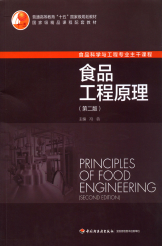
并列正书名: PRINCIPLES OF FOOD ENGINEERING
主要责任者: 冯骉
责任方式: 主编
出版者: 中国轻工业出版社
出版地: 北京
字数: 849 千字
页码: 1-580
开本: 16
中图分类号: TS201.1
装帧: 简装
语种:中
定价:72.00
出版时间:2017-07
丛书多卷书否:是
丛书名:普通高等教育“十五”国家级规划教材
书目简介:本册工具书是普通高等教育“十五”国家级规划教材之一,共收录198条词条。
被引频次:7
| 词条 | 食品工程原理 |
| 类别 | 中文百科知识 |
| 释义 |  并列正书名: PRINCIPLES OF FOOD ENGINEERING 主要责任者: 冯骉 责任方式: 主编 出版者: 中国轻工业出版社 出版地: 北京 字数: 849 千字 页码: 1-580 开本: 16 中图分类号: TS201.1 装帧: 简装 语种:中 定价:72.00 出版时间:2017-07 丛书多卷书否:是 丛书名:普通高等教育“十五”国家级规划教材 书目简介:本册工具书是普通高等教育“十五”国家级规划教材之一,共收录198条词条。 被引频次:7 |
| 随便看 |
开放百科全书收录579518条英语、德语、日语等多语种百科知识,基本涵盖了大多数领域的百科知识,是一部内容自由、开放的电子版国际百科全书。